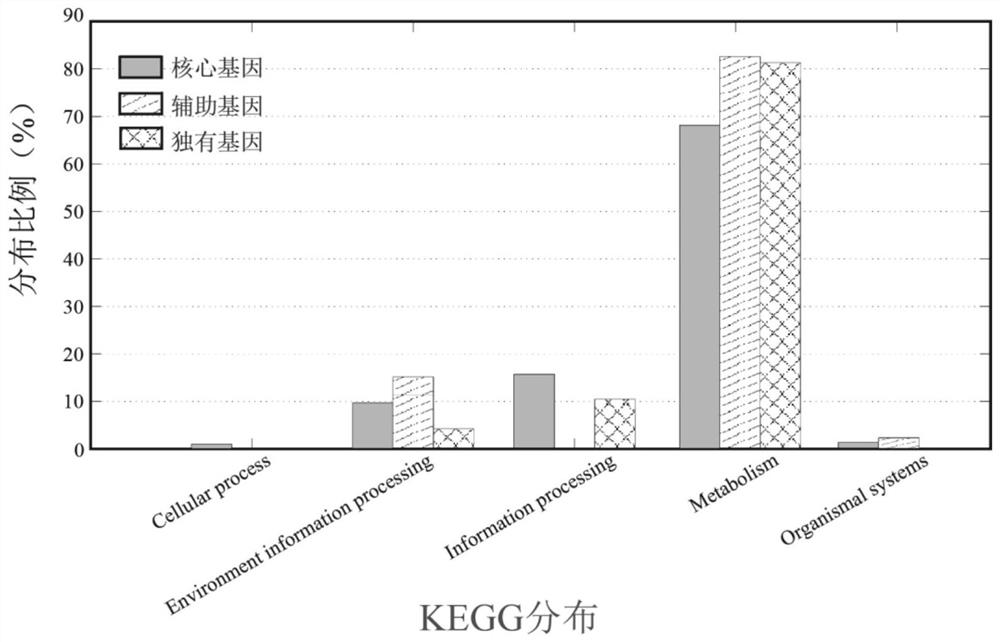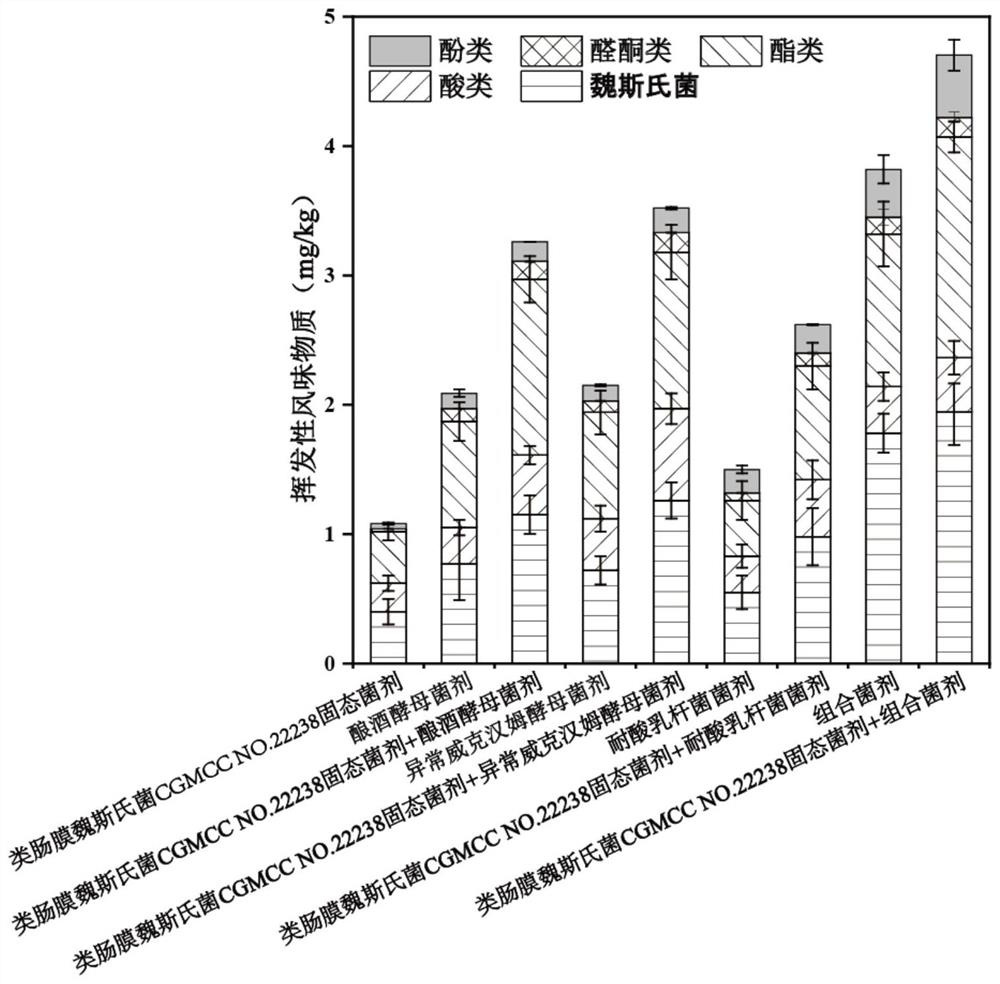Weissella mesenteroides for promoting production of flavor substances in fermented food and application of Weissella mesenteroides
A Weissella enteric membrane technology, applied in the field of Weissella enteroides, can solve problems such as flavor characteristics, tolerance safety, lack of in-depth understanding of substrate utilization, etc., to improve substrate utilization, The effect of reducing production costs and improving flavor profiles
- Summary
- Abstract
- Description
- Claims
- Application Information
AI Technical Summary
Problems solved by technology
Method used
Image
Examples
Embodiment 1
[0037] Example 1: Isolation and screening of Weissella enterica from liquor fermented grains
[0038] (1) Strain isolation and screening
[0039] Weigh 5g of wine fermented grains sample and dissolve in 150mL sterile normal saline, fully shake and mix for 30min, dilute 10 5 times, spread on the MRS solid medium, culture at 37°C for 48 hours, select a single colony, and transfer the selected single colony to the basic medium, cultivate for 36 hours, and transfer the basic culture medium to the liquid grain medium Carry out fermentation, and carry out the detection of flavor substance.
[0040] (2) Strain identification
[0041] Carry out molecular biology identification to the superior performance bacterial strain obtained by step (1) screening, utilize the bacterium classification identification primer to amplify the 16S rDNA fragment of above-mentioned screened microorganism, and carry out gel electrophoresis. The amplified product is sequenced and compared, and the strain...
Embodiment 2
[0043] Example 2: Detection of bacterial strain tolerance
[0044] (1) Acid resistance test of bacterial strains
[0045] A loop of Weissella enterica-like cells screened in Example 1 was inoculated into the basal medium, and cultured for 24 hours. Use lactic acid or hydrochloric acid to adjust the pH of basal medium 1 to 5.0, 4.0, 3.0, 2.7, 2.4, and 2.1, respectively, and set 3 parallel groups for each pH, and insert OD in equal amounts of medium with different pH 600 =1 basal culture solution, cultured statically for 48 hours at 37°C. The strain growth is shown in Table 1. The results showed that Weissella enteritiformis CGMCC NO.22238 has acid tolerance and can adapt to and function in the acidic environment of fermented food.
[0046] Table 1 The growth of Weissella enteritiformis CGMCC NO.22238 under acidic conditions (OD 600 )
[0047]
[0048] (2) Strain resistance to ethanol test
[0049] A loop of Weissia enteritidis bacteria was inoculated into the liquid ...
Embodiment 3
[0060] Example 3: Flavor Potential Analysis of Weissella Enteritidis CGMCC NO.22238
[0061] (1) Whole genome sequencing of strains
[0062] Whole genome sequencing of Weissella enteroides CGMCC NO.22238. Whole genome extraction methods, library construction methods, fragment purification methods, and PacBio platform sequencing methods refer to papers: Won Hyong Chung, Jisu Kang, Mi Young Lim, Tae-joong Lim, Sanghyun Lim, Seong Woon Roh and Young-Do Nam, 2018. Complete genome sequence and genomic characterization of Lactobacillus acidophilus LA1(11869BP). Frontiers in pharmacology 9.
[0063] The assembled genome sequence of Weissella enteritidis CGMCC NO.22238 was compared with the reported genome of Weissia enteritidis, and the genome information is shown in Table 5.
[0064] Table 5 Basic genome comparison information of Weissella enterofasciata CGMCC NO.22238
[0065]
[0066]Among them, the corresponding situation of Weissella enteroides strain NCBI Genbank assembly...
PUM
| Property | Measurement | Unit |
|---|---|---|
| Viable count | aaaaa | aaaaa |
Abstract
Description
Claims
Application Information
 Login to View More
Login to View More - R&D
- Intellectual Property
- Life Sciences
- Materials
- Tech Scout
- Unparalleled Data Quality
- Higher Quality Content
- 60% Fewer Hallucinations
Browse by: Latest US Patents, China's latest patents, Technical Efficacy Thesaurus, Application Domain, Technology Topic, Popular Technical Reports.
© 2025 PatSnap. All rights reserved.Legal|Privacy policy|Modern Slavery Act Transparency Statement|Sitemap|About US| Contact US: help@patsnap.com



